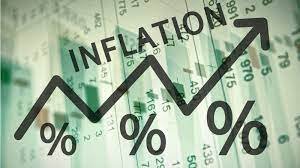Retail Inflation Drops to 4-Month Low of 4.87% in October
The retail inflation rate in India saw a notable decline, reaching a four-month low of 4.87% in October, as reported by the Ministry of Statistics and Programme Implementation. This drop in the Consumer Price Index (CPI) is attributed primarily to the reduction in food prices, contributing significantly to the overall decline in inflation. The subdued inflationary trend marks a positive trajectory in the country’s economic scenario, holding several implications for various sectors.

Why this News is Important
Impact on Economic Policies: The decline in retail inflation holds substantial importance for policymakers, particularly the Reserve Bank of India (RBI), which closely monitors inflation trends while formulating monetary policies. A lower inflation rate might influence the RBI’s decisions on key interest rates, impacting borrowing costs and overall liquidity in the market.
Consumers’ Purchasing Power; Reduced inflation generally leads to increased purchasing power for consumers, allowing them to buy more goods and services without a significant rise in prices. This can positively impact the standard of living for individuals and households, contributing to overall economic growth.
Historical Context
To understand the significance of the recent dip in retail inflation, it’s essential to consider the historical context. Over the past few years, India has been grappling with inflationary pressures, especially regarding food and fuel prices. These inflationary concerns have often posed challenges for policymakers, impacting the country’s economic stability.
Key Takeaways from “Retail Inflation Drops to 4-Month Low of 4.87% in October”
| Serial No. | Key Takeaway |
|---|---|
| 1. | Retail inflation in India hit a four-month low of 4.87% in October 2023. |
| 2. | The drop in inflation was largely driven by a decrease in food prices. |
| 3. | Lower inflation rates can influence monetary policies set by the RBI. |
| 4. | Consumers may experience increased purchasing power due to reduced inflation. |
| 5. | Historical context reveals persistent inflationary pressures in India, making this decline significant. |
Important FAQs for Students from this News
What Factors Contributed to the Drop in Retail Inflation?
The decline in retail inflation was primarily influenced by reduced food prices, playing a significant role in pushing the overall inflation rate lower.
How Does Retail Inflation Affect Monetary Policies?
Retail inflation serves as a key factor in shaping monetary policies, impacting decisions regarding interest rates set by institutions like the RBI.
What Are the Implications of Lower Inflation Rates on Consumers?
Lower inflation rates generally translate to increased purchasing power for consumers, allowing them to buy more without a substantial rise in prices.
What Historical Context Highlights the Significance of This Dip in Inflation?
India has grappled with persistent inflationary pressures in recent years, making this decline to a four-month low particularly noteworthy.
Are There Sector-Specific Impacts of Decreasing Retail Inflation?
Sectors like retail, manufacturing, and investment often experience shifts in demand and profitability based on inflation trends.
Some Important Current Affairs Links















